-
Previous
[Report] Deliberations on QZSS at the 7th Session of the IMO's NCSR
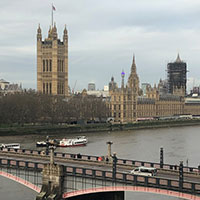
-
Next
EU-Japan GNSS Mission (Day 2)
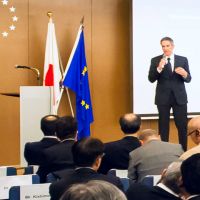
4th EU-Japan Public and Private GNSS Roundtable Meeting by the Cabinet Office and the European Commission
The Cabinet Office, Government of Japan and the European Commission jointly held the 4th EU-Japan Public and Private GNSS Roundtable Meeting at the Mita Conference Center in Minato City, Tokyo on March 14.
The EU-Japan Public and Private GNSS Roundtable Meeting, held collaboratively by Japan and the European Union (EU) on the usage of satellite positioning, started with the first roundtable at The Hague in the Netherlands in June 2016. The second roundtable took place in Tokyo in March 2017, when the Cabinet Office and the European Commission signed a Cooperation Arrangement for identifying priority industrial fields for utilizing satellite positioning, creating new businesses and services, and strengthening policy cooperation between Japan and the EU. A delegation led by the Cabinet Office’s National Space Policy Secretariat visited Germany for the third roundtable in Munich in March 2018.
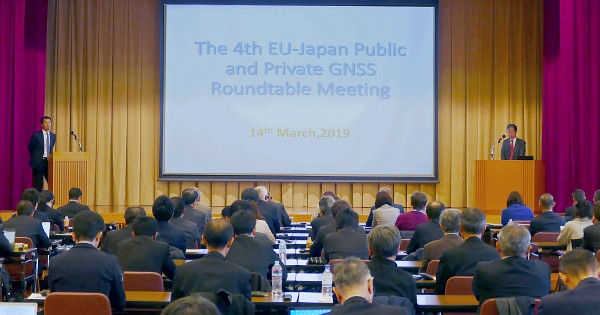
Meeting venue
This fourth roundtable was attended by more than 20 participants from the EU, drawing government officials, corporations, and other Japanese and European people with ties to the Quasi-Zenith Satellite System (QZSS) and Galileo. It included result reports and communication between the participants.
EU-Japan collaboration offers major benefits for industries in both countries
The opening remarks were given by Mr. Shuzo Takada, director-general, National Space Policy Secretariat, Cabinet Office and Mr. Pierre Delsaux, deputy director-general, DG GROW, European Commission. Mr. Takada stated that EU-Japan satellite positioning collaboration started in 2016 and has already achieved various results. He said, “We have cultivated knowledge for the practical usage of QZSS and Galileo services through this partnership, and I believe it offers major benefits to the industries of both countries. At this roundtable meeting, exchanges of views between members of Japanese and European industries from the viewpoint of utilizing QZSS and Galileo services can inspire joint EU-Japan businesses. I also hope EU-Japan cooperation will also lead to strengthened international competitiveness for both.”
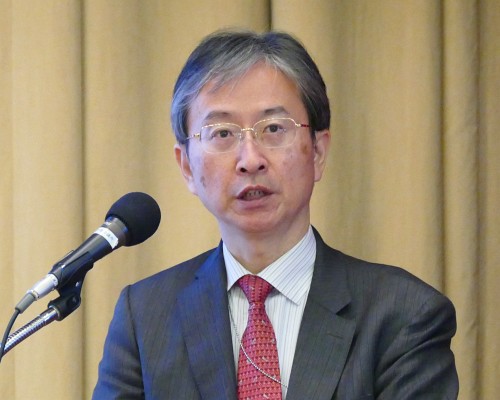
Mr. Takada of the Cabinet Office
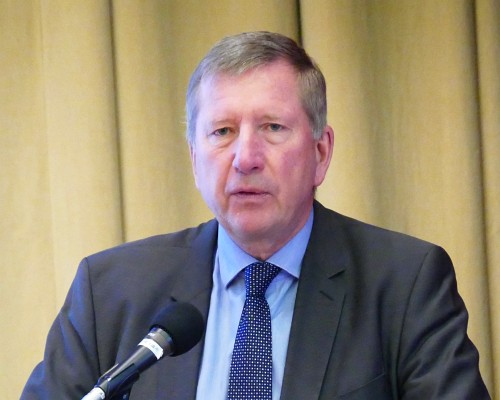
Mr. Delsaux of DG GROW, European Commission
In the morning, persons from Japan and the EU presented on the latest QZSS and Galileo information. There were also presentations on the results of QZSS/Galileo collaboration, including a QZSS early warning system proof-of-concept in Australia, and a dual-frequency SBAS proof-of-concept using a QZSS signal for experiments. The presentation on the early warning system proof-of-concept was a joint effort by Mr. Yasuhiko Kawazu, deputy director, QZSS Strategy Office, National Space Policy Secretariat, Cabinet Office and Mr. Frederic Domps, policy officer, Galileo/EGNOS Applications, DG GROW, European Commission.
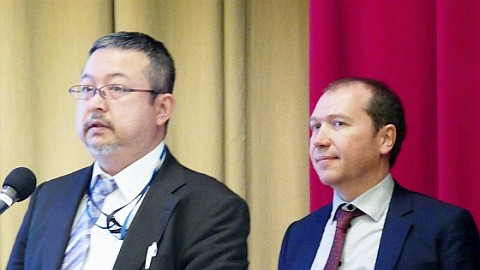
Mr. Kawazu of the Cabinet Office and Mr. Domps of DG GROW, European Commission
Program/Presentation materials
- Overview/ Introduction of QZSS service
Mr. Go Takizawa, Executive Director, QZSS Strategy Office, National Space Policy Secretariat, Cabinet Office (3,514KB) - Overview/ Introduction of GALILEO service
Mr. Christoph Kautz, DG GROW, European Commission - Early Warning System
Mr. Yasuhiko Kawazu, Deputy Director, QZSS Strategy Office, National Space Policy Secretariat, Cabinet Office/Mr. Frederic DOMPS, Policy Officer, DG GROW, European Commission (1,111KB) - DFMC SBAS: Reception of QZSS L5 SBAS Signal in Europe
Mr. Takeyasu Sakai, Electronic Navigation Research Institute (1,779KB)
Automotive, Agriculture, and GNSS Trends Sessions
During the afternoon, sessions were held by Japanese and European corporations and research institutions on three fields: Automotive, Agriculture, and GNSS Trends (Drone Technologies). The Automotive session included many case studies about how companies are utilizing high-precision QZSS and Galileo positioning for automated driving systems. The Agriculture session described the results of initiatives and research for applying highly accurate satellite positioning technologies to agricultural equipment automatic control, remote operation, and other tasks. The last session, GNSS Trends (Drone Technologies), featured the results of initiatives and experiments using high-precision satellite positioning for safe drone flight, measuring, maintenance, transport, and more.
The wide range of speakers included employees of major corporations and start-ups. Question-and-answer sessions were held at the end of each session, with lively exchanges of opinions between the speakers and audience members.
Program/Presentation materials
Session 1: Automotive
- Mr. Masao Fukushima, SIP Sub-Program Director, ITS Technical Consultant, Engineering Service Department, NISSAN AUTOMOTIVE TECHNOLOGY. (SIP : Cross-Ministerial Strategic Innovation Promotion Program)(2,137KB)
- Martin Grzebellus, CEO, NavCert
- Mr. Yasuo Komoto, Customer Project Manager, CONTINENTAL AUTOMOTIVE (1,320KB)
- Mr. Pedro Moreno-Lahore, Manager - Driving Assistance Research, VALEO
- Mr. Robin Streiter, Chief Strategy Officer, NAVENTIK
- Ms. Oihana Otaegui, Director ITS & Engineering, VICOMTECH
- Mr. Yuji Motohashi, Marketing Manager, ST MICROELECTRONICS (1,442KB)
Session 2: Agriculture
- Mr. Michael Mahieu, GNSS Manager, CNH-NEW HOLLAND
- Ms. Maria Campo-Cossio, Project Manager, CTC (656KB)
- Mr. Mitsuru Hachiya, Director, Dept. of Innovative Engineering, RESEARCH INSTITUTE OF AGRICULTURAL MACHINERY (NARO) (2,634KB)
Session 3: GNSS Trend (Drone technologies)
- Mr. Kazuhiko Miyamoto, Project Manager, Robots/AI Division, National Research and Development Agency, NEW ENERGY AND INDUSTRIAL TECHNOLOGY DEVELOPMENT ORGANIZATION (NEDO) (1,726KB)
- Mr. Ismael Colomina, Chief Executive Officer, GEONUMERICS
- Mr. Jan De Turck, Sales Manager, SEPTENTRIO (3,012KB)
- Mr. Josep Maria Salanova Grau, Senior Researcher, CENTER FOR RESEARCH AND TECHNOLOGY HELLAS (CERTH)
A precious opportunity for using GNSS to improve daily life
The closing remarks were given by Mr. Go Takizawa, executive director, QZSS Strategy Office, National Space Policy Secretariat, Cabinet Office and Mr. Christoph Kautz, DG GROW, European Commission. Mr. Takizawa said EU-Japan collaboration will enable the usage of GNSS to improve daily life. He ended the event by saying, “This meeting was a precious opportunity to achieve wonderful things. I look forward to accomplishing these together with everyone.”
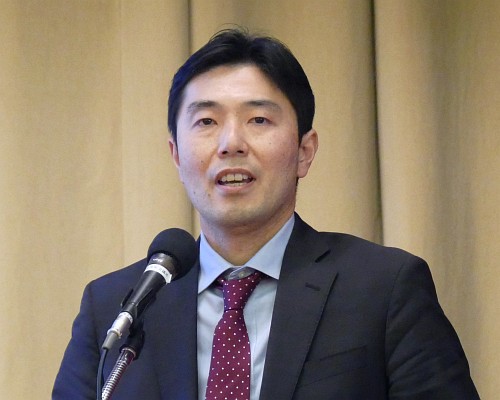
Mr. Takizawa of the Cabinet Office
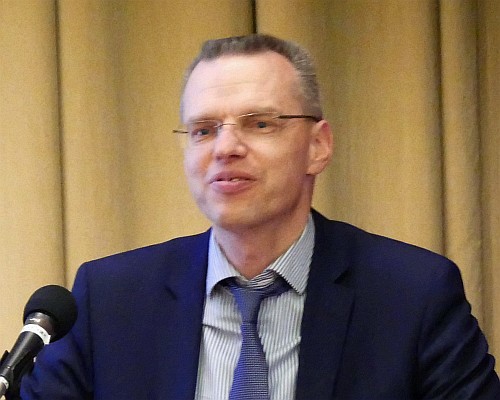
Mr. Kautz of DG GROW, European Commission
Lively communication between the participants
At the exhibition area in a separate room, GNSS equipment that supports QZSS and Galileo from various companies was displayed. Many participants stopped to look at devices including the latest receivers, GNSS modules, GNSS trackers, and GNSS watches, and also listened to explanations from the booth staff members. A networking presentation took place after the sessions with lively communication between the participants.
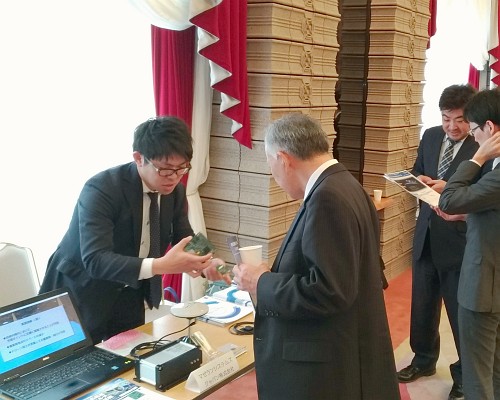
Exhibition area
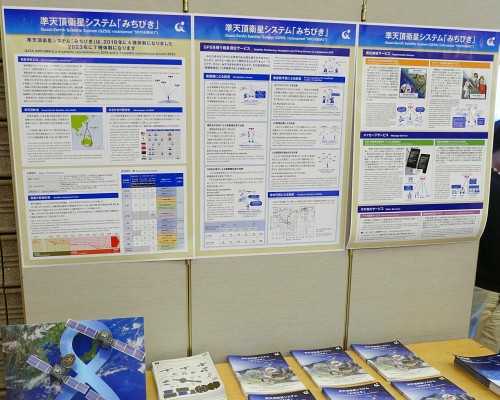
QZSS information panels
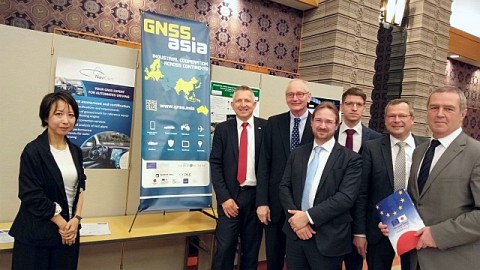
EU poster exhibition (image provided by GNSS.asia/EU-Japan Centre for Industrial Cooperation)
Reference
-
 Dec.15,2021
Dec.15,20215th EU-Japan Public and Private GNSS Roundtable 2021
-
 Sep.17,2021
Sep.17,2021RPD Challenge 2020, a QZSS hackathon organized by the Cabinet Office, MGA, and GISTDA
-
 Mar.05,2020
Mar.05,2020[Report] Deliberations on QZSS at the 7th Session of the IMO's NCSR
-
 May.04,2017
May.04,2017EU-Japan GNSS Mission (Day 2)
-
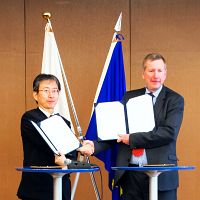 May.03,2017
May.03,2017Signing of a Cooperation Arrangement on Satellite Positioning Application
-
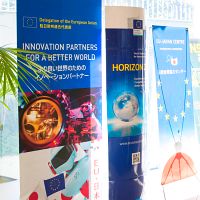 May.02,2017
May.02,2017EU-Japan GNSS Mission (Day 1)
-

Information about events related to QZSS
-
 Sep.12,2017
Sep.12,2017Mitsubishi Heavy Industries Exhibited the first and second stages of QZS-4 Launch Vehicle
-
 Aug.18,2017
Aug.18,2017Exhibition of the QZS-4
-
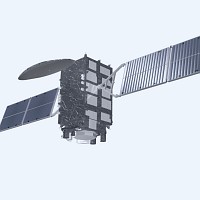 Aug.17,2017
Aug.17,2017Live Broadcast of the QZS-3 Launch
-
 Jul.07,2017
Jul.07,2017Mitsubishi Heavy Industries Exhibits the QZS-3 Launch Vehicle
-
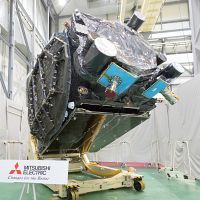 Jun.16,2017
Jun.16,2017Exhibition of the QZS-3
-
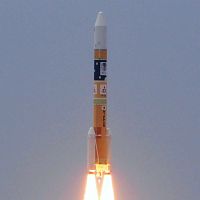 Jun.01,2017
Jun.01,2017Successful Launch of QZS-2
-
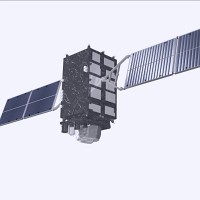 May.30,2017
May.30,2017Live Broadcast of the QZS-2 Launch
-
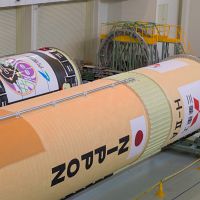 Apr.25,2017
Apr.25,2017Mitsubishi Heavy Industries Exhibits the QZS-2 Launch Vehicle Core Frame
-
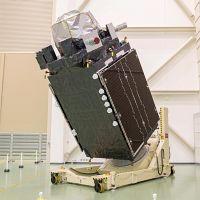 Apr.07,2017
Apr.07,2017Exhibition of the QZS-2


